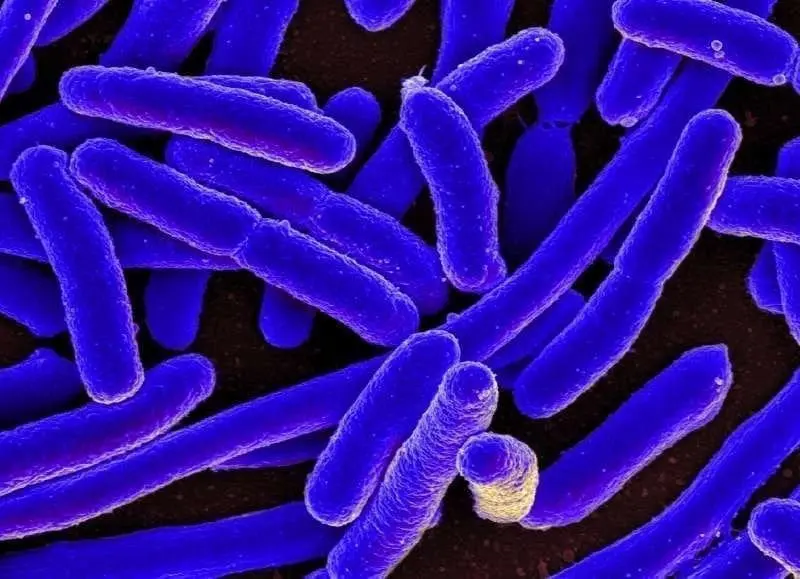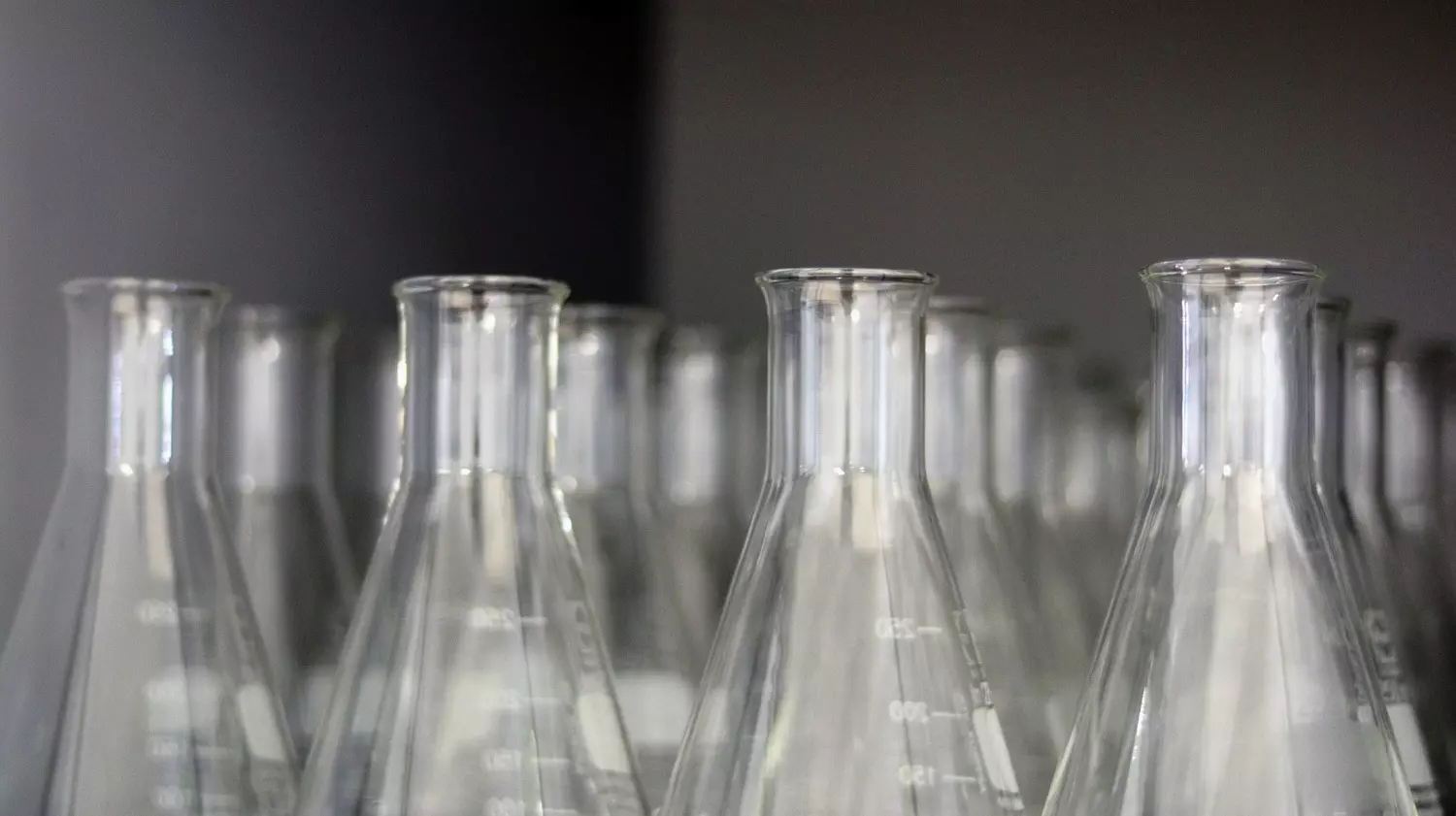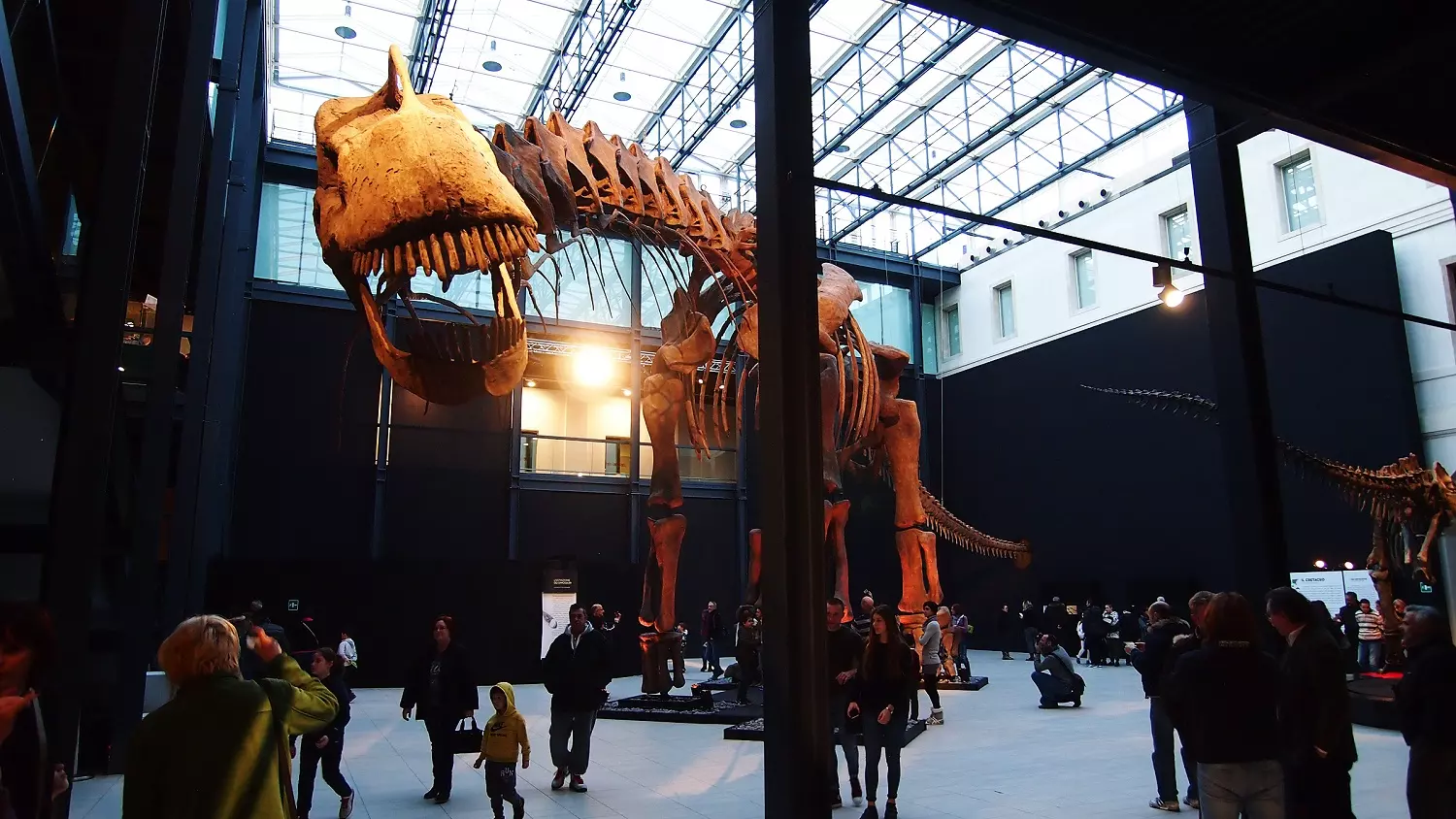[Originally published as Longest Evolution Experiment Dead-End]
The industry’s longest-running research experiment reached a milestone in October, 2017 studying the evolution of more than 68,000 generations of bacteria. Biologist Richard Lenski started the now legendary experiment in his laboratory early in 1988 with just 12 flasks seeded with genetically identical bacteria known as Escherichia coli (E. coli). The bacteria have since been growing in a carefully measured solution of glucose, a type of sugar—“food” for bacteria.
Each flask contained just a sparse amount of glucose to create a stressful environment along with a high concentration of citrate, a molecular close cousin of glucose, pushing the bacteria to evolve. Every day, since 1988, Lenski’s laboratory team has transferred a small sample into new 50 ml Erlenmeyer flasks. Although wanting to quit this laborious experiment many times, Lenski has continued this process non-stop for over 30 years – now recognized as the industry’s longest evolution experiment dead-end.
Model
Bacteria have been extremely important in studying evolution. The University of Colorado’s website entitled Bacteria as a Model System asserts that bacteria have “been one of the great vindications of the theory of evolution.”
Enduring the permeating annoyance of E. coli’s infamous reeking putrid smell, Richard Lenski’s lab at Michigan State University embraced a design for what has become the most widely recognized experiment to test the star of the evolution industry. Bacteria offer scientists a fast-forward glimpse of evolution.
Reproductive rates, often measured in doubling-times, allow scientists to track and trend changes over short periods of time. The higher the doubling-time, the greater the number of generations available to study over the same time. In bacteria, while the doubling-times average 20 minutes, in humans the doubling-time requires 20 years. Writing for Science Alert, Fiona MacDonald puts the comparison between bacteria and human evolution into context:
Scientists have spent the past 30 years carefully tracking evolution across more than 68,000 generations of E. coli bacteria—the equivalent of more than 1 million years of human evolution.
Freezer
As important as doubling-times are in studying evolution, the key for Lenski that escalating his project from observation to a revolutionary experiment started with the laboratory freezer. The freezer holds the registry of each flask’s common ancestor – Darwin’s key to evolution.
Every 75 days, equivalent to approximately 500 generations, Lenski’s lab team systematically transfers 1% of the E. coli from each of the 12 flasks into the freezer for storage at -112 degrees Fahrenheit – high-tech fossilization. From these frozen ancestors, the team can trace the molecular changes overtime to detail E. coli’s mechanisms of evolution.
Fast-Forward
Bacteria offers scientists a fast-forward way to study evolution. What happens to bacteria with modern molecular technology can be observed and measured—feats not possible even a decade ago. Of critical importance, the experiment can be repeated. Repeatability is essential for validating a theory to be a scientific fact.
A scientific theory, to be valid, must accurately predict what is going to happen 100% of the time; like Isaac Newton’s falling apple theory—gravity. Lenski’s study model perfectly offers scientists this opportunity. Marlene Cimons writing for the National Science Foundation in the article “E. coli Offers Insight to Evolution,” explains:
The experiment was designed to ask about the repeatability of evolution.
Currently, what plagues the validity of current evolution theories centers on reconciling the dynamic between some unknown unguided random process and the guarantee of a repeatable outcome. If the recording tape of evolution could be re-run again, what happened before must happen again. As Lenski explains in an interview with Cimons:
If we look at the tension between the randomness of mutation and the predictability of natural selection, how does evolution play out when you put the two together… That’s really what this long-term experiment has been all about.
In recognition of Lenski’s work, the National Center for Science Education’s (NCSE) awarded the 2017 Friend of Darwin Award to Lenski for his E. coli Long-Term Experimental Evolution Project. NCSE’s executive director Ann Reid said:
It would be hard to think of anybody who has done as much to show that evolution is among the experimental sciences than Rich Lenski.
Keep Getting Bigger
Lenski’s team observed a rapid increase in E. coli cell size in all 12 flasks starting from the beginning in 1988—and they keep getting bigger by the year. Since a consistent increase in size was observed in all flasks, this supports a significant scientific requirement—repeatability, not an insignificant finding.
Not only did the cell size get bigger, the increase in cell size developed despite living in a sparse glucose environment. The observed growth indicates an increase in fitness overtime as Charles Darwin had predicted. In an interview with his publisher W.W. Norton & Company, Lenski explains:
One result is that the average fitness in each population increases over time… the same process that Darwin discovered.
From his Down House library, Darwin wrote out his fitness argument in The Origin of Species:
This tendency… to go on increasing in size… has prevailed throughout all time… [and] is utterly inexplicable on the theory of creation. As natural selection acts solely by accumulating slight, successive, favourable variations.
With his observations verified, Lenski legitimately argued for the repeatable nature of evolution in Proceedings of the National Academy of Sciences:
Evolution may thus be broadly repeatable.
Today’s populations grow about 80% faster than the original lines in all flasks, a phenomena Lenski calls “a beautiful example of adaptation by natural selection.”
Something New

Colorized scanning electron micrograph of Escherichia coli, grown in culture and adhered to a cover slip.
Getting bigger is the smaller part of Lenski’s findings. In 2008, around 16 years into the experiment and near generation 30,000, something new happened in Flask #9. The solution became consistently cloudier and darker than the other flasks.
For Lenski the bacteria seemed to have “evolved the capacity to exploit citrate”—the only other energy source in the solution. At the time, what happened was a mystery. The step to develop a new metabolic process involves a level of complexity light-years more advanced than simply getting bigger. Using citrate was a game changer.
The news ignited the evolution industry: finally, at last, evolution had the ever-elusive observable, measurable and repeatable scientific evidence. Clues to what happened, however, was not to be known until 2012.
How citrate could be used a as an energy source was a molecular mystery since E. coli can only can use citrate while in the absence of oxygen. In fact, E. coli growing on citrate in an anoxic environment—no oxygen—is one of its uniquely identifying characteristics. Microbiologists use citrate in non-oxygen environments to differentiate E. coli from other bacteria.
Finally in 2012, following the wake of new molecular technologies, geneticist Zachary Blount finally pen-pointed the genetic mystery in the paper “Genomic analysis of a key innovation in an experimental Escherichia coli population,” published in Britain’s prestigious Nature journal.
Blount discovered E. coli’s key innovation—a genetic duplication. The sequences of DNA nucleotides in the region of the cit gene duplicated and the sequences were rearranged. With this new duplicated DNA section, the newly arranged promoter gene gained control over the blocking gene to allowing the use citrate for energy—even in the presence of oxygen.
Harvard Gazette staff writer, Alvin Powell, jumped to speculate in 2014 “that one of the 12 bacterial lines he has maintained has developed into what he believes is a new species.” In the words of Lenski: “I would argue that citrate users are—or are becoming—a new species,” vindicating Darwin’s origin of species argument, it seemed.
Dead-End
Once touted as scientific evidence to support evolution, Lenski’s experiment has now reached a dead end. The persistent increase in the rate of E. coli cell size observed early in the study has not continued. Reporting in The Scientist, science writer Abby Olena notes Lenski’s problem:
Between 40,000 and 50,000 generations, there was [only] a 3 percent increase in mean fitness.
Along with the dead end of the cell size problem, only Flask #9 has developed the ability to use citrate in Lenski’s laboratory since 2008; none of the other 11 flasks have developed the same mutation drawing into question the repeatability of evolution.
The repeatability issue, however, was resolved by Dustin Van Hofwegen at the University of Idaho. Hofwegen observed the development of E. coli citrate-using mutants in as few as 12 generations.
The study, entitled “Rapid Evolution of Citrate Utilization by Escherichia coli,” was published in the Journal of Bacteriology in 2016. According to Hofwegen, Lenski’s long-term evolution experiment (LTEE) has reached an experimental dead end:
Here we show why it probably was not a speciation event… We conclude that the rarity of the LTEE mutant was an artifact of the experimental conditions and not a unique evolutionary event. No new genetic information (novel gene function) evolved.
Flask #9 was Lenski’s best shot for uncovering evidence for an evolutionary event amongst the estimated hundreds of millions of mutations over the past 30 years—translating to more than a million years of human evolution (sic). But, the holy grail of evolution, speciation, never happened.
Laboratory experiments repeatedly demonstrate how bacteria, while having an incalculable capacity for change, continue as from the beginning. Bacteria have not “been one of the great vindications of the theory of evolution,” as touted by the University of Colorado.
By starting with E. coli and ending with E. coli, Lenski’s laboratory project now has the distinction as the industry’s longest evolution experiment dead-end.
Genesis
Despite a flood of challenges since the publication of The Origin of Species, the scientific evidence found in nature is increasingly best explainable by the Genesis record written by Moses.
Louis Pasteur, a French chemist and microbiologist who was one of the most important founders of medical microbiology, was driven to today’s increasingly popular conclusion:
Science brings one nearer to God.
Biological evolution exists only as a philosophy, not a science.







